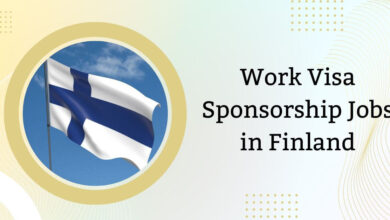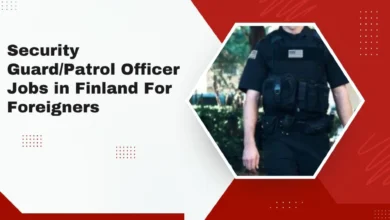Poland Work Visa for Skill Shortage Jobs 2025 – Apply Now

The starting pistol has fired! Employers are fighting to fill key gaps in tech, healthcare, construction, and other fields as Poland’s rising economy creates a high-stakes war for qualified workers. If you handle the entry properly, this is an exciting possibility for foreign workers.
Selecting the incorrect work visa could potentially exclude you from the competition in addition to causing a delay.
Are you prepared to implement the appropriate plan? With information on all the important Polish work visas, including Type A, EU Blue Card, seasonal, and more, this high-impact book serves as your tactical map, enabling you to choose the best tool for overcoming the talent shortage situation and starting a career in one of Europe’s most vibrant countries. Now is the beginning of your mission.
Overview:
Depending on the type of work, the duration of stay, and the credentials of the applicant, Poland offers a variety of work visas. The primary categories of Polish work visas are
1. Type A Work Permit
- Purpose: For foreign employees working for a Polish employer.
- Typical Roles: General employment in various sectors.
- Duration: Up to 3 years; renewable
2. Type B Work Permit
- Purpose: For foreign nationals serving as board members or proxies in Polish companies.
- Requirements: Must not own shares in the company
3. Type C Work Permit
- Purpose: For employees of foreign companies temporarily assigned to a Polish branch.
- Duration: Limited to 3 years.
4. Type D Work Permit
- Purpose: For service providers from abroad working in Poland without a registered Polish company.
- Scope: Applicable to specific service contracts.
5. Type E Work Permit
- Purpose: For rare or exceptional employment cases not covered by other permit types.
- Flexibility: Allows for unique employment situations.
6. Seasonal Work Permit
- Purpose: For short-term employment in agriculture, tourism, and hospitality sectors.
- Duration: Up to 9 months within a 12-month period.
7. EU Blue Card
- Purpose: For highly skilled professionals with a university degree or equivalent experience.
8. Temporary Residence and Work Permit
- Purpose: For non-EU nationals intending to work in Poland for more than 3 months.
- Validity: Up to 3 years; includes both residence and work authorization
9. Poland Business Visa (D-Type)
- Purpose: For business visits exceeding 90 days.
- Scope: Not intended for employment; for business activities and meetings.
New Updates in Poland’s Immigration Policy:
- Points-Based Work Permit System
Poland currently evaluates work visa applicants using a points-based system that takes into account factors like education, experience, pay, language proficiency, and relevance to labor market demands. Priority is given to those with higher ratings, particularly in shortage sectors. - Labor Market Test Removed
The majority of positions no longer require a labor market test in order to expedite the hiring process. A new list of “protected professions,” however, limits foreign employment in some positions that are sensitive to local conditions. - Mandatory Employment Contracts
Applications for work permits are only approved under written employment contracts. Contracts under civil law that gave foreign workers more rights and job security are no longer enforceable. - Updated Work Permit Fees
Visa and permit fees have been revised:- National Visa (Type D): €80
- Temporary Residence Permit: €40
- EU Blue Card: €60
- Seasonal Work Visa: €30.
- Digital Application System
Applications for residency and work permits are now handled entirely online, cutting down on paperwork and speeding up the decision-making process.
Shortlisting the Right Poland Work Visa for Skill Shortage Jobs:
Here are some tips for reducing your options if your objective is to begin working in a Poland that has a skills shortage right away:
Type A Work Permit – The Standard Choice
The Type A Work Permit is the simplest and most popular choice if you already have a job offer in Poland in a field with a lack of skilled workers, such as IT, healthcare, engineering, logistics, or construction.
Ideal for: Qualified workers who have Polish employment offers.
Poland EU Blue Card – For Highly Qualified Workers
The EU Blue Card provides better benefits, such as simpler family reunion, quicker choices for permanent residency, and later intra-EU work mobility, provided you have a university degree and a high-paying job offer in a profession that is in high demand, such as ICT specialists, engineers, or medical physicians.
Ideal for: Professionals with advanced degrees making more than the Polish threshold.
Seasonal Work Permit – For Temporary Skill Shortage Jobs
The Seasonal Work Permit might be the quickest way to enter Poland and begin working in industries like agriculture, tourism, hospitality, or food processing that experience seasonal shortages. It permits employment for up to nine months of the year.
Ideal for: Applicants looking for seasonal job options with immediate entry.
Temporary Residence and Work Permit – Long-Term Settlement Route
You should choose the Temporary Residence and Work Permit if you plan to stay longer, live in Poland, and work in a field where there is a skills need without having to apply for a residence permit separately. It encompasses both lawful employment and lawful residence in Poland.
Ideal for: Skilled long-term employees looking to settle down.
Poland Skill Shortage Occupations Onwards:
Some of the top shortage occupations expected in Poland in 2025 include:
- Software Developers and IT Specialists
- Construction Engineers and Workers
- Healthcare Professionals (Doctors, Nurses, Caregivers)
- Truck Drivers and Heavy Machinery Operators
- Welders, Electricians, and Plumbers
- Chefs and Hospitality Workers
- Manufacturing and Assembly Line Workers
- Logistics Managers and Warehouse Workers
Companies in these industries are eager to hire foreign workers and are frequently willing to sponsor work permits.
How to Apply for Poland Work Visa for Skill Shortage Jobs 2025?
Following your choice of visa category, you must do the following actions to apply for a work visa to Poland:
1. Secure a Job Offer
- Eligibility: You must first obtain a job offer from a Polish employer in order to be eligible for visa types such as Type A, EU Blue Card, Seasonal Work Permit, or Temporary Residence and Work Permit.
- Required Document: An official offer letter or employment contract that complies with Polish labor legislation must be provided by the company.
2. Employer Applies for Work Permit
- Application Location: The local Voivodeship (regional) office in Poland is where the employer will submit the work permit application.
- Employer’s Role: The employer bears the responsibility of guaranteeing the submission and processing of the work permit application.
3. Receive Work Permit Decision
- Processing Time: The Voivodeship office may need several weeks to process and issue the work permit.
- Approval: After being accepted, you will receive your work permit and be able to apply for the appropriate visa.
4. Apply for National D-Type Work Visa
- Application Location: You must apply for a National D-Type Work Visa at the Polish embassy or consulate in your place of residence after obtaining your work permit.
- The work permit, your employment offer, your qualifications, and any other paperwork the Polish embassy requests are all examples of required documentation.
- Documents:
- Valid passport
- Work permit from the employer
- Employment contract
- Proof of qualifications
- Medical insurance
- Recent passport-size photos
- Visa application form
- Documents:
5. Travel to Poland and Start Work
- Visa Approval: You will receive a D-Type Work Visa, which enables you to enter Poland, if your visa is accepted.
- Arrival in Poland: In accordance with the conditions of your work permit and visa, you can start working in your new position as soon as you arrive.
Conclusion:
Poland’s expanding economy in 2025 is giving foreign workers lots of chances, particularly in fields where there is a skill shortage. Foreign workers can choose the work visa that best suits their career goals from a variety of alternatives, such as the well-liked Type A Work Permit and the EU Blue Card for highly qualified professionals. You may ensure a bright future in one of Europe’s most vibrant nations by choosing the appropriate permission and adhering to the new visa criteria. Now is the moment to take action and take full advantage of this competitive, high-stakes talent market as Poland continues to expand.
Frequently Asked Questions:
Which visa is best for high-skilled professionals?
With advantages including simpler family reunification and accelerated pathways to permanent residency, the EU Blue Card is perfect for highly trained individuals like engineers, IT specialists, and healthcare personnel.
How long can I stay in Poland on a Seasonal Work Permit?
With a seasonal work permit, you can work for up to nine months out of a twelve-month period, usually in industries like hospitality, tourism, and agriculture.




